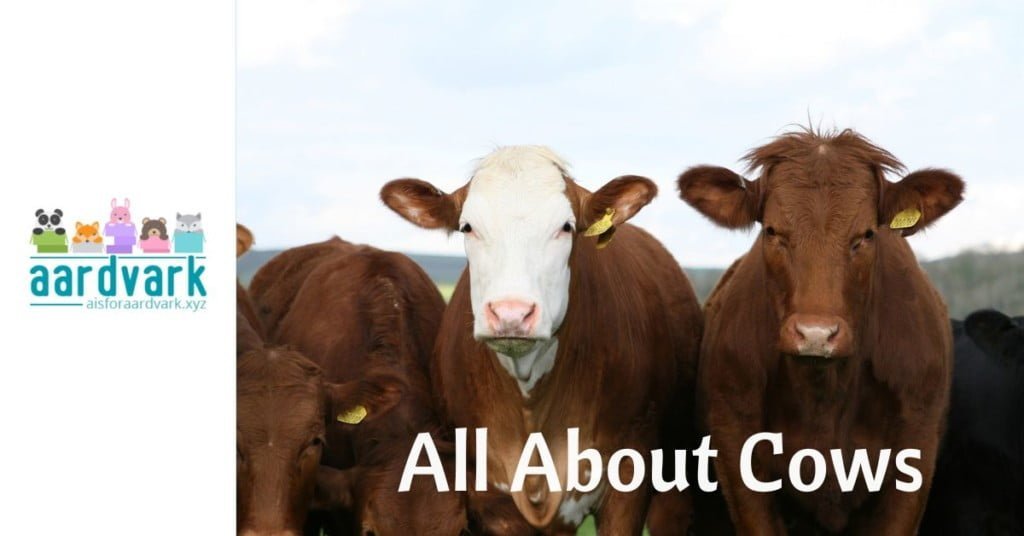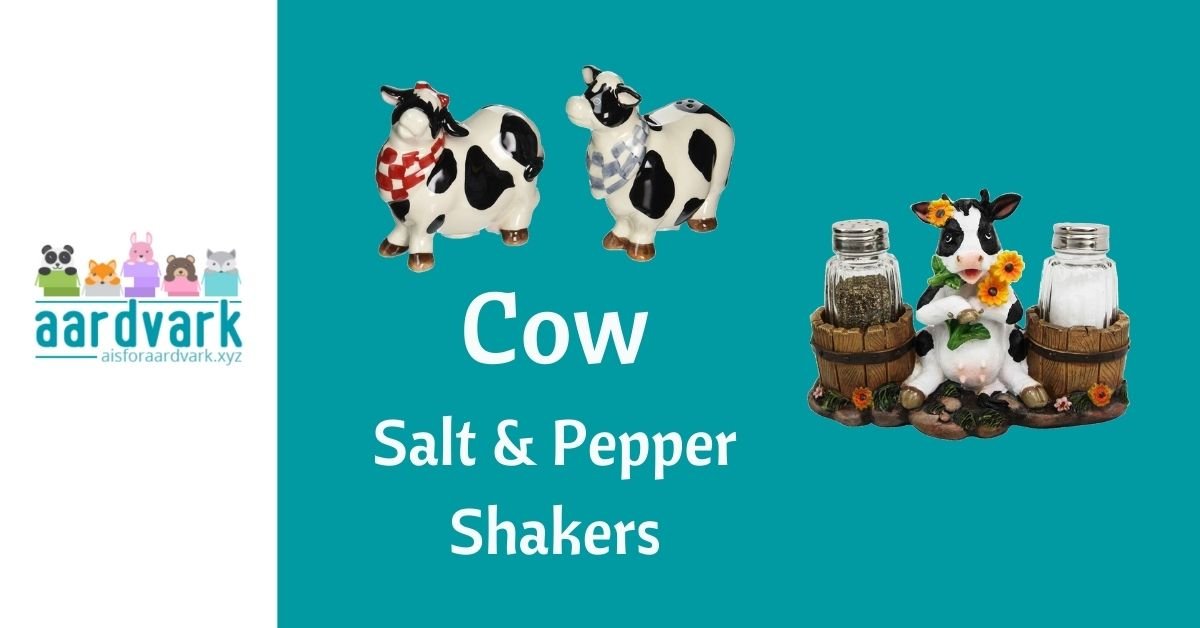Cows are iconic creatures that have played a significant role in human history for thousands of years. With their gentle demeanor, distinctive appearance, and important contributions to agriculture, cows have earned their place in both rural landscapes and our hearts.
In this article, we’ll embark on a journey to explore the world of cows, from their appearance, size, and color to their dietary preferences, mating habits, communal behavior, fascinating facts, and their cultural significance, including appearances in pop culture. It’s all of these factors that play into making them and their unique appearance a popular part of decor, especially the farmhouse style!
Appearance, Size, and Color
Cows, scientifically known as Bos taurus, are herbivorous mammals that come in various breeds. They share some common physical characteristics:
- Size: Cows are typically large animals. It’s actually adult females that are known as cows, ranging from 1,000 to 1,800 pounds in weight. Adult males, called bulls, can be even larger, sometimes exceeding 2,000 pounds. The two together are more accurately called oxen.
- Build: They have a robust build with a sturdy, barrel-shaped body supported by four strong, stocky legs.
- Coat: Cow coats come in various colors and patterns. Some common coat colors include black, brown, white, and shades of red. Many cows also display distinctive patterns like spots, patches, or stripes, depending on their breed.
Diet
Cows are ruminants, meaning they have a specialized stomach with four compartments, allowing them to efficiently digest fibrous plant material. Their diet primarily consists of:
- Grasses: Cows are natural grazers and thrive on a diet of fresh grasses and other green plants.
- Hay: During the winter months or when fresh forage is scarce, cows are often fed dried grasses, known as hay.
- Silage: Another common food source for cows is silage, which is fermented grass or maize stored in airtight conditions.
- Grain: Some farmers supplement their cows’ diets with grains like corn or soybean meal to provide extra energy.
Mating Habits
Cows have a specific mating system that includes:
- Estrous Cycle: Female cows undergo a regular estrous cycle, also known as a “heat” cycle, which typically lasts around 21 days. During this time, they are receptive to mating.
- Bulls: Bulls, the male counterparts, are, of course, essential in mating! They compete for the attention of females and engage in courtship displays.
- Gestation: The gestation period for cows is approximately 9 months, similar to humans. After this period, a cow gives birth to a calf.
- Motherhood: Mother cows, known as dams, are attentive mothers. They nurse their calves for several months, providing them with the essential nutrients needed for growth.
Communal Habits
Cows are social animals with communal habits that help ensure their well-being:
- Herd Living: Cows often live in herds, which provide protection against predators and social interaction. Herd members communicate through vocalizations, body language, and grooming.
- Hierarchy: Within a herd, cows establish a social hierarchy, often based on age and dominance. This hierarchy helps reduce conflicts and maintain order within the group.
- Mutual Grooming: Cows engage in mutual grooming, where they use their tongues to clean each other’s fur. This behavior strengthens social bonds and contributes to herd cohesion.
Interesting Facts
- Four-Chambered Stomach: Cows have a unique four-chambered stomach that allows them to digest cellulose effectively, making them efficient herbivores.
- Ruminant Digestion: The process of ruminant digestion involves regurgitating and re-chewing food in a cud to break it down further before final digestion in the stomach.
- Methane Production: Cows are known for producing methane gas, a potent greenhouse gas. However, ongoing research seeks ways to reduce their methane emissions to mitigate climate change.
- Sacred in Some Cultures: In Hinduism, cows are considered sacred and are revered as symbols of non-violence and motherhood. They are protected and cared for in many parts of India.
Cultural Significance
Cows hold immense cultural significance in various societies around the world:
- Hinduism: As mentioned earlier, cows are highly revered in Hinduism, where they are seen as symbols of divinity and purity. They are protected and often roam freely in many Indian cities.
- Cowboys and Ranching Culture: In the American West, cows are deeply ingrained in the cowboy and ranching culture, symbolizing a rugged and independent way of life. Rodeos, cattle drives, and western films celebrate this cultural connection.
- Agriculture: Cows have been essential to agriculture for centuries, providing milk, meat, leather, and labor for farming. They have played a pivotal role in the development of human civilizations.
Appearances in Pop Culture
Cows have made their mark in popular culture through various mediums:
- Children’s Stories: Cows frequently appear in children’s books, such as “Click, Clack, Moo: Cows That Type” by Doreen Cronin, where cows go on strike and communicate through typewriters.
- Animated Films: Animated movies like “Home on the Range” and “Barnyard” feature cow characters with distinctive personalities and adventures.
- Advertising: Cows have been used in advertising, notably by Chick-fil-A, where the “Eat Mor Chikin” cows encourage consumers to choose chicken over beef.
- Mascots: Cows have been adopted as mascots by dairy companies, such as the iconic “Elsie the Cow” for Borden Dairy.
Conclusion
Cows are remarkable creatures that have made their mark in both nature and human culture. Their distinctive appearance, size, dietary preferences, mating habits, and communal behaviors make them fascinating subjects of study and admiration. From their role in agriculture to their revered status in certain cultures and their appearances in pop culture, cows hold a special place in our world, reminding us of the deep connections between humans and animals.




